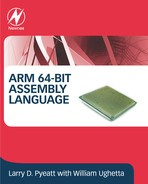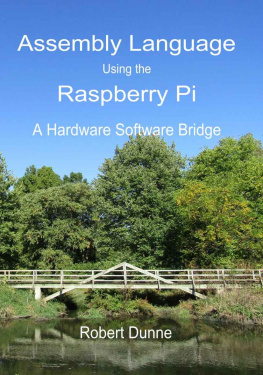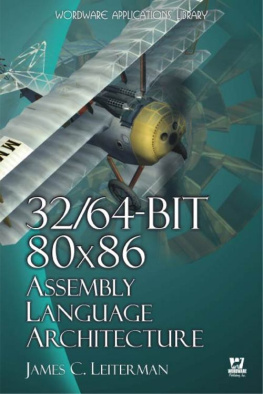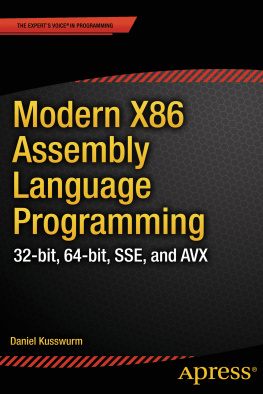Larry D. Pyeatt
Copyright
Newnes is an imprint of Elsevier
The Boulevard, Langford Lane, Kidlington, Oxford OX5 1GB, United Kingdom
50 Hampshire Street, 5th Floor, Cambridge, MA 02139, United States
Copyright 2020 Elsevier Inc. All rights reserved.
No part of this publication may be reproduced or transmitted in any form or by any means, electronic or mechanical, including photocopying, recording, or any information storage and retrieval system, without permission in writing from the publisher. Details on how to seek permission, further information about the Publisher's permissions policies and our arrangements with organizations such as the Copyright Clearance Center and the Copyright Licensing Agency, can be found at our website: www.elsevier.com/permissions.
This book and the individual contributions contained in it are protected under copyright by the Publisher (other than as may be noted herein).
Notices
Knowledge and best practice in this field are constantly changing. As new research and experience broaden our understanding, changes in research methods, professional practices, or medical treatment may become necessary.
Practitioners and researchers must always rely on their own experience and knowledge in evaluating and using any information, methods, compounds, or experiments described herein. In using such information or methods they should be mindful of their own safety and the safety of others, including parties for whom they have a professional responsibility.
To the fullest extent of the law, neither the Publisher nor the authors, contributors, or editors, assume any liability for any injury and/or damage to persons or property as a matter of products liability, negligence or otherwise, or from any use or operation of any methods, products, instructions, or ideas contained in the material herein.
Library of Congress Cataloging-in-Publication Data
A catalog record for this book is available from the Library of Congress
British Library Cataloguing-in-Publication Data
A catalogue record for this book is available from the British Library
ISBN: 978-0-12-819221-4
For information on all Newnes publications visit our website at https://www.elsevier.com/books-and-journals
Publisher: Mara Conner
Acquisition Editor: Tim Pitts
Editorial Project Manager: Joshua Mearns
Production Project Manager: Anitha Sivaraj
Designer: Greg Harris
Typeset by VTeX

List of figures
- Fig. 1.1 Simplified representation of a computer system.
- Fig. 1.2 Stages of a typical compilation sequence.
- Fig. 1.3 Tables used for converting between binary, octal, and hexadecimal.
- Fig. 1.4 Four different representations for binary integers.
- Fig. 1.5 Complement tables for base ten and base two.
- Fig. 1.6 A section of memory can be viewed in different ways.
- Fig. 1.7 Typical memory layout for a program with a 32-bit address space.
- Fig. 2.1 Equivalent static variable declarations in Assembly and C.
- Fig. 3.1 A simplified view of the AArch64 architecture.
- Fig. 3.2 AArch64 general purpose registers (
 ) and special registers.
) and special registers. - Fig. 3.3 Fields in the PSTATE register.
- Fig. 5.1 AArch64 User Program Registers.
- Fig. 6.1 Binary tree of word frequencies.
- Fig. 6.2 Binary tree of word frequencies with index added.
- Fig. 6.3 Binary tree of word frequencies with sorted index.
- Fig. 7.1 In signed 8-bit math, 110110012 is 3910
 .
. - Fig. 7.2 In unsigned 8-bit math, 110110012 is 21710.
- Fig. 7.3 Multiplication of large numbers.
- Fig. 7.4 Longhand division in decimal and binary.
- Fig. 7.5 Flowchart for binary division.
- Fig. 8.1 Examples of fixed point signed arithmetic.











 .
. implementations on an nVidia Jetson TX-1.
implementations on an nVidia Jetson TX-1. .
.